The Editor explores a ‘different’ option from Turkish company, Kuzey - the K300 air rifle is a multi-shot PCP underlever retailing at £550
It’s not often a new rifle offers a different way of doing things, but the Kuzey K300 certainly does that. Until the novelty wears off, this rifle’s underlever cocking action will grab most of the headlines, and cause a tidy few debates in the process, but there’s far more to this multi-shot, PCP bullpup than how its action is primed and loaded.
Supplied by UK agents, Range Right, it comes dressed in a high-quality, oiled walnut stock, it’s presented with two multi-shot magazines, it produces over 200 shots per 200-bar charge in .177, and over 300 in .22, and depending on where you shop, it costs around £550, or less.
In Turkish, Kuzey means ‘north’, but the translation we really need to study, is the one involving price and performance. Let’s begin that process by studying the features of the Kuzey K300.
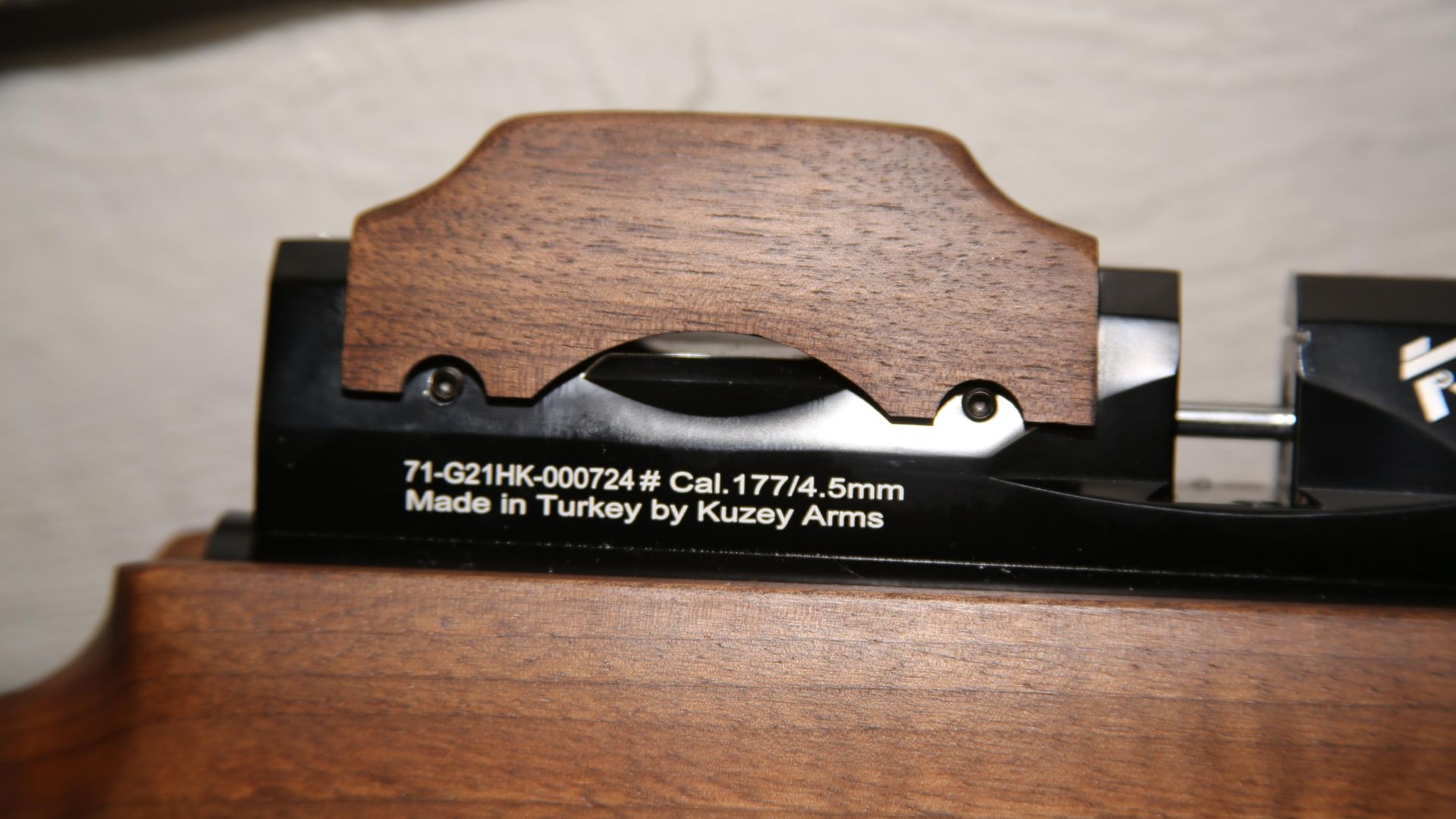
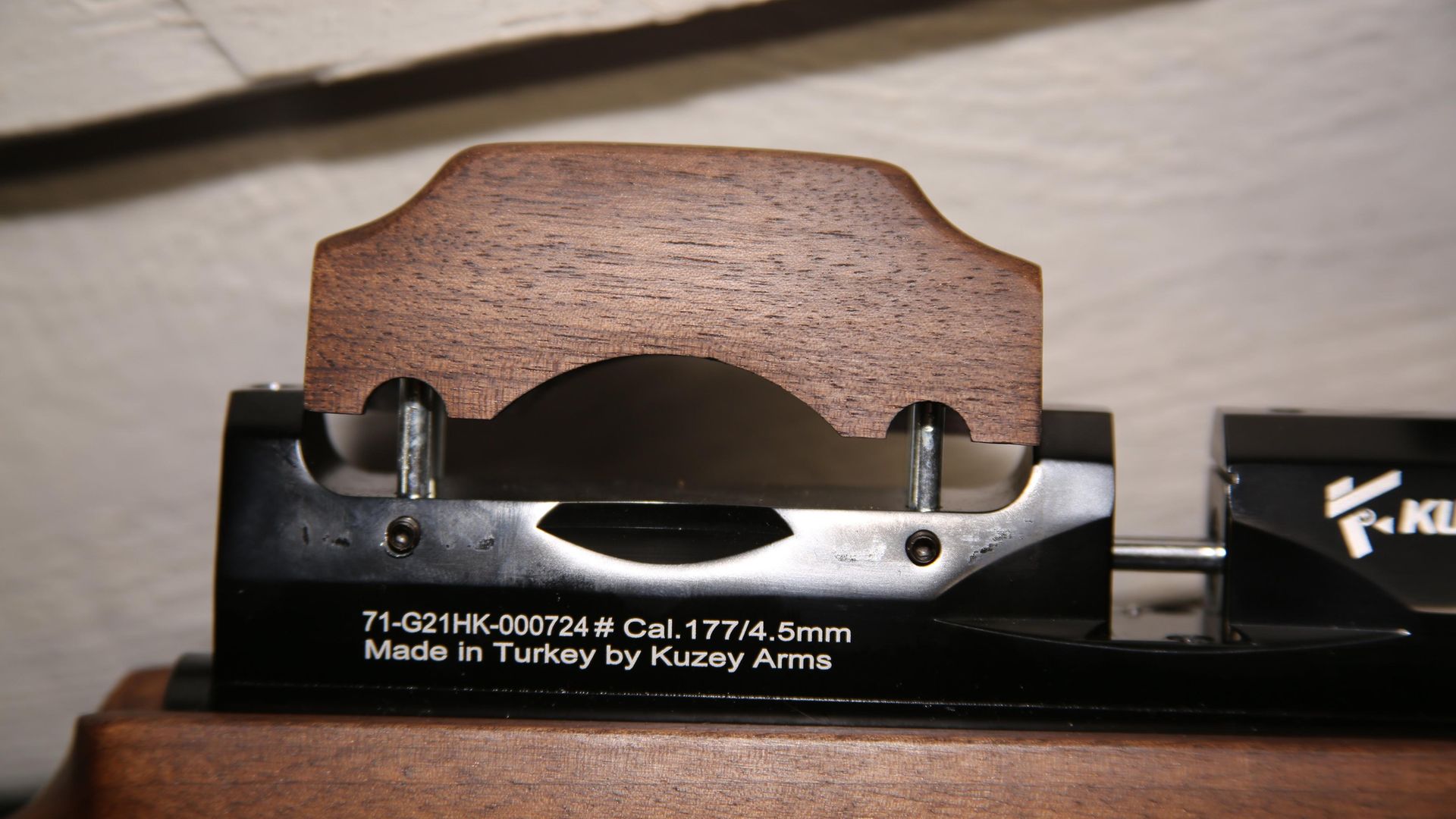 credit: Archant
credit: Archant
FEATURES INVENTORY
First impressions are undeniably good, thanks to that expertly stippled, ambidextrous stock and the well-finished action held to it with a single bolt through the base of the grip. The Picatinny scope mounting rail sits 40mm above the centre of the K300’s bore, and in my initial trials with various scopes, I found lower mounts and smaller diameter objective lenses worked better for me.
Had I required a higher head position, the abbreviated walnut cheekpiece offers around 20mm of ‘fine-tuning’ vertical adjustment, via a pair of hex-head locking screws in the right-hand side of the action block. The hi-grip, curved rubber butt-pad is non-adjustable, and within two minutes of my first encounter with this rifle, I’d decided that I’d fit an adjustable replacement.
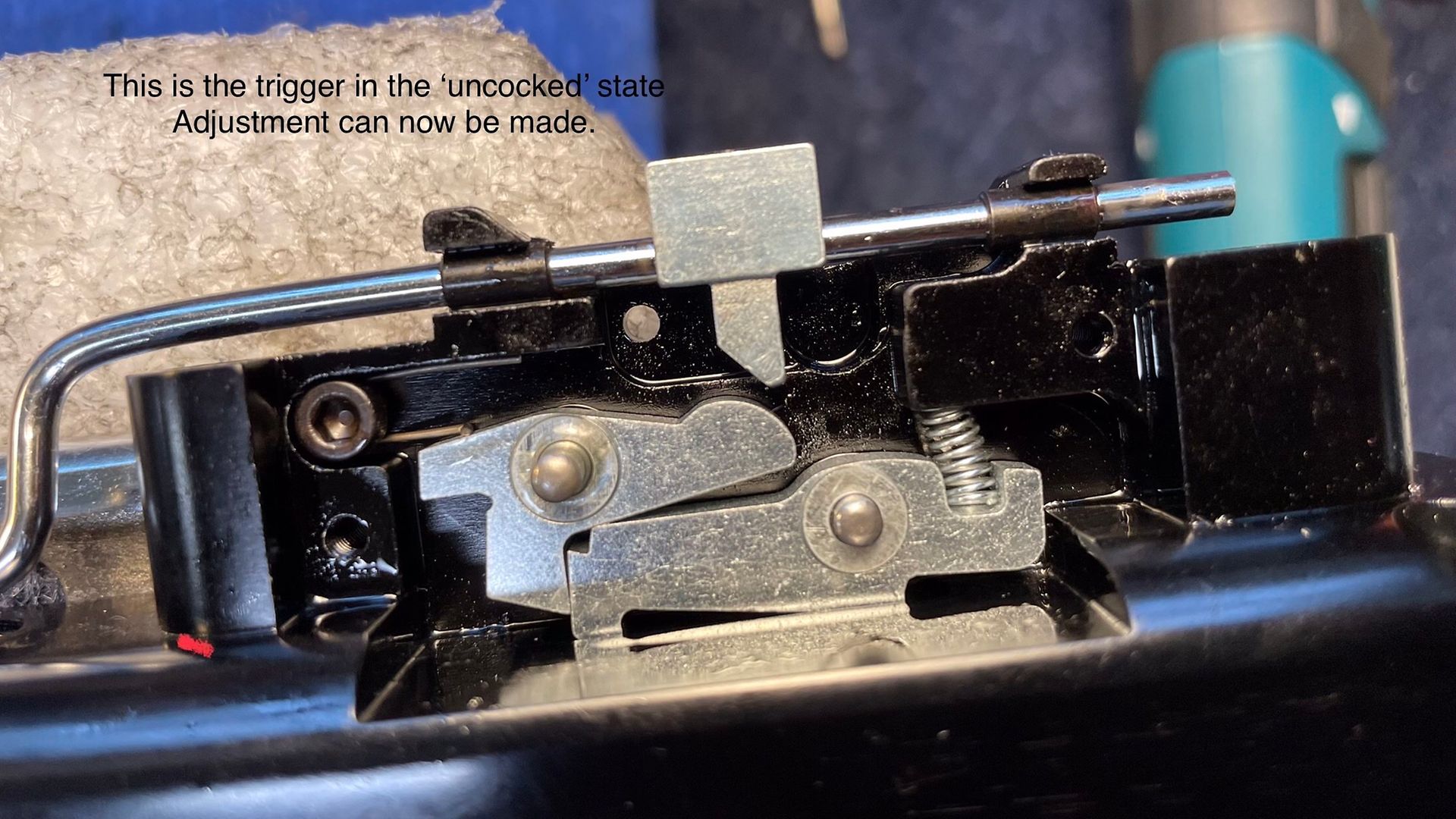 credit: Archant
credit: Archant
TRIGGER TWEAKS
At the muzzle end, a knurled collar shields a ½-inch UNF thread, so fitting a silencer won’t be a problem, and the overall configuration of this Kuzey’s barrel assembly could be described as ‘semi-shrouded’, with sections of shroud each side of the scope mounting rail.
Travel forward 14.6 inches from the inside curve of the butt-pad, and you’ll find the pleasingly-curved trigger and its push-through safety button. As delivered, the test rifle’s trigger was factory-set on the ‘safe’ side of crisp, but a chat with Dave, Range Right’s resident technical genius, soon gave me the advice I needed to drop the Kuzey’s stock, remove the plate covering the trigger mechanism, and apply the necessary tweaks to its remote trigger linkage.
It took me around 10 minutes to get things as I prefer them, but if you’re unsure about such things, I’d strongly advise you to seek the services of a gunsmith, because ultra-light settings are available, but not advisable.
THAT COCKING SYSTEM
Right, now let’s take a close, practical look at that underlever cocking and loading system. Truth to tell, pulling down and pushing up on a PCP’s cocking lever feels odd, and why wouldn’t it? After sending downrange countless thousands of pellets from bolt-action and sidelever rifles, I wasn’t even sure which hand to use to operate that underlever.
I switched back and forth for a few shots, until I settled on using my forward hand, every time. Once I’d established the basics, the efficiency of ergonomics quickly established itself and I was positively flicking down that lever as my hand travelled backwards, and closing the action as my supporting hand resumed its main job.
Is it a better system? It could be, but I’ll need to explore its application in a wide variety of situations.
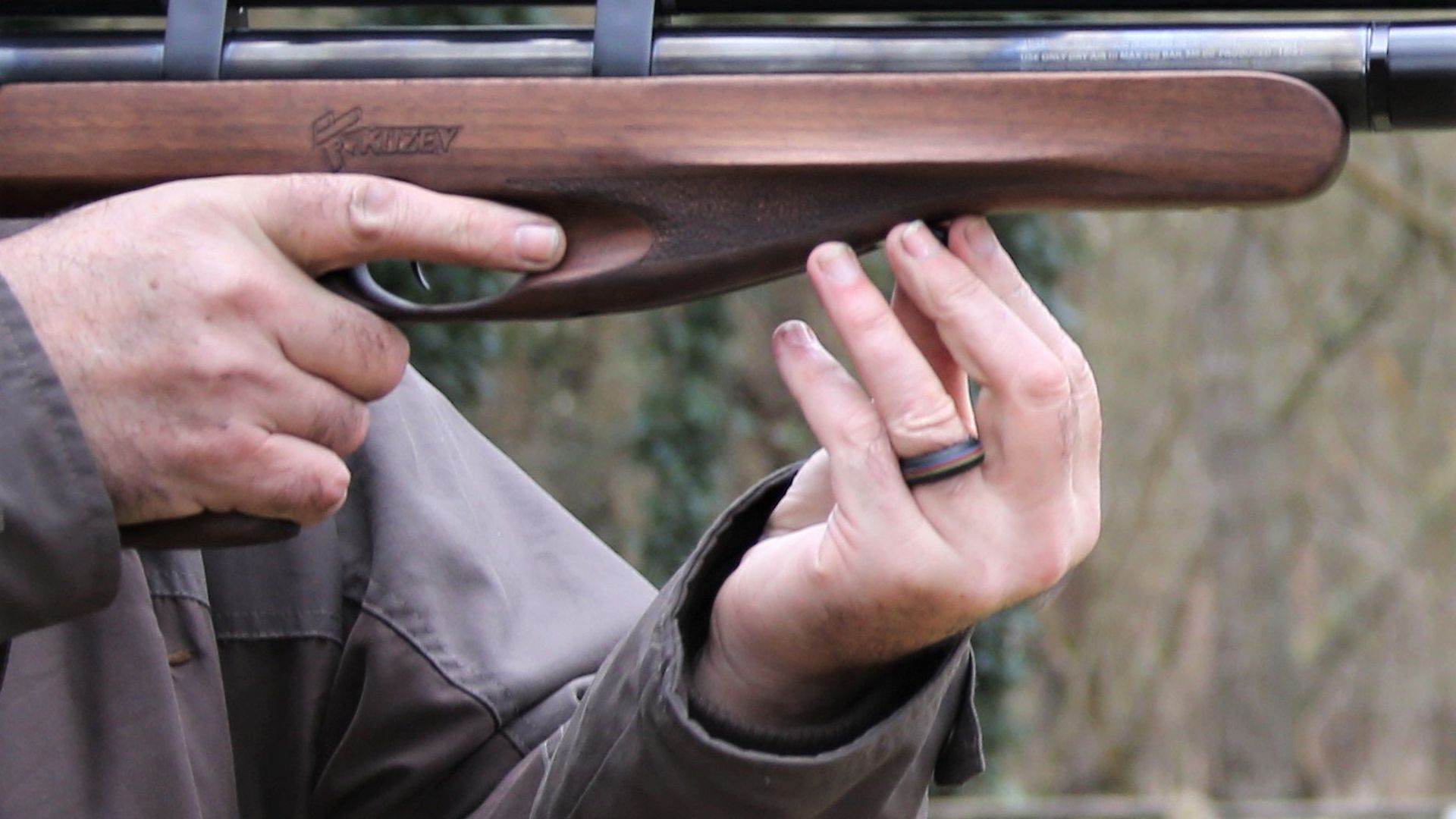
 credit: Archant
credit: Archant
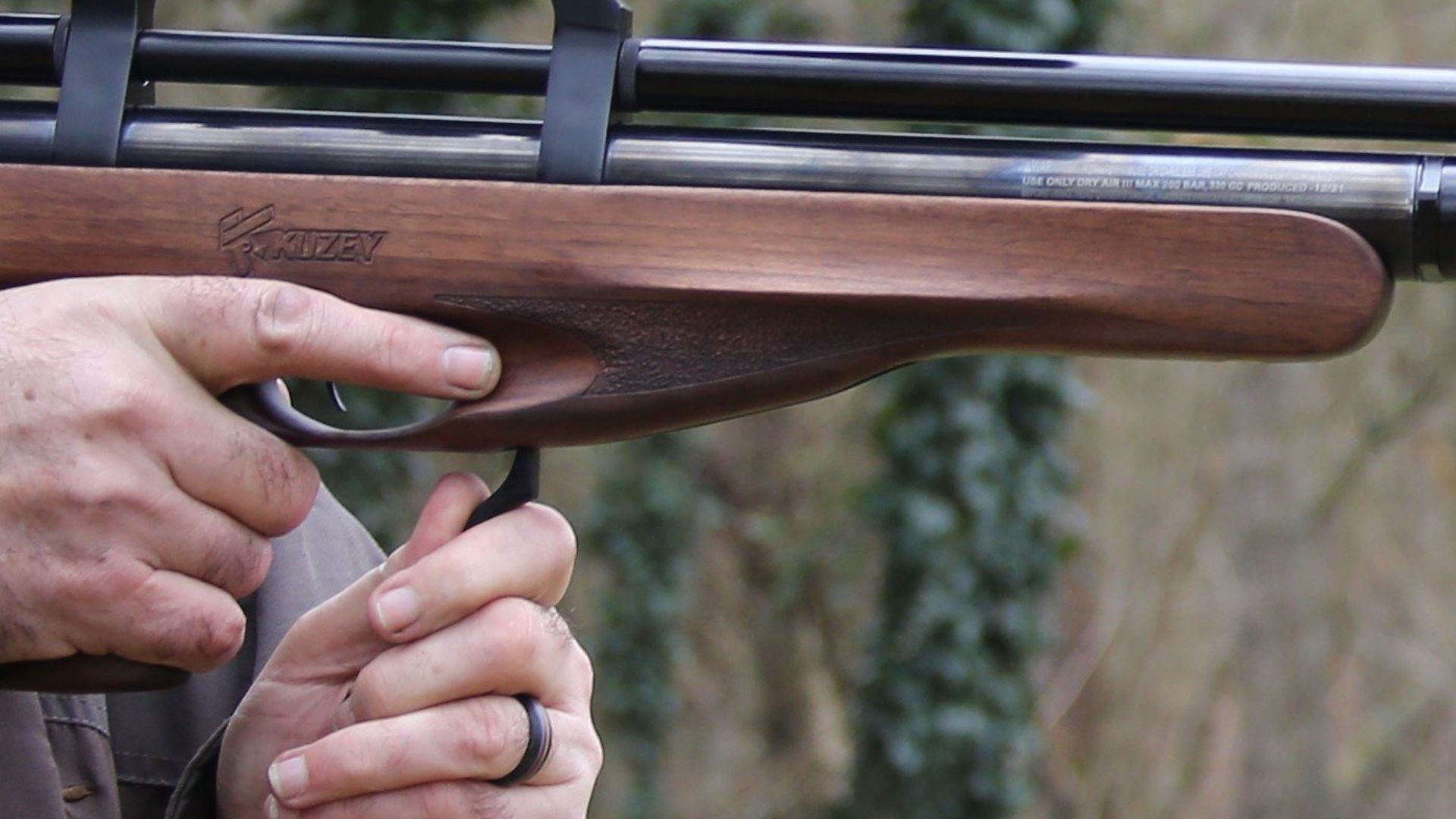 credit: Archant
credit: Archant
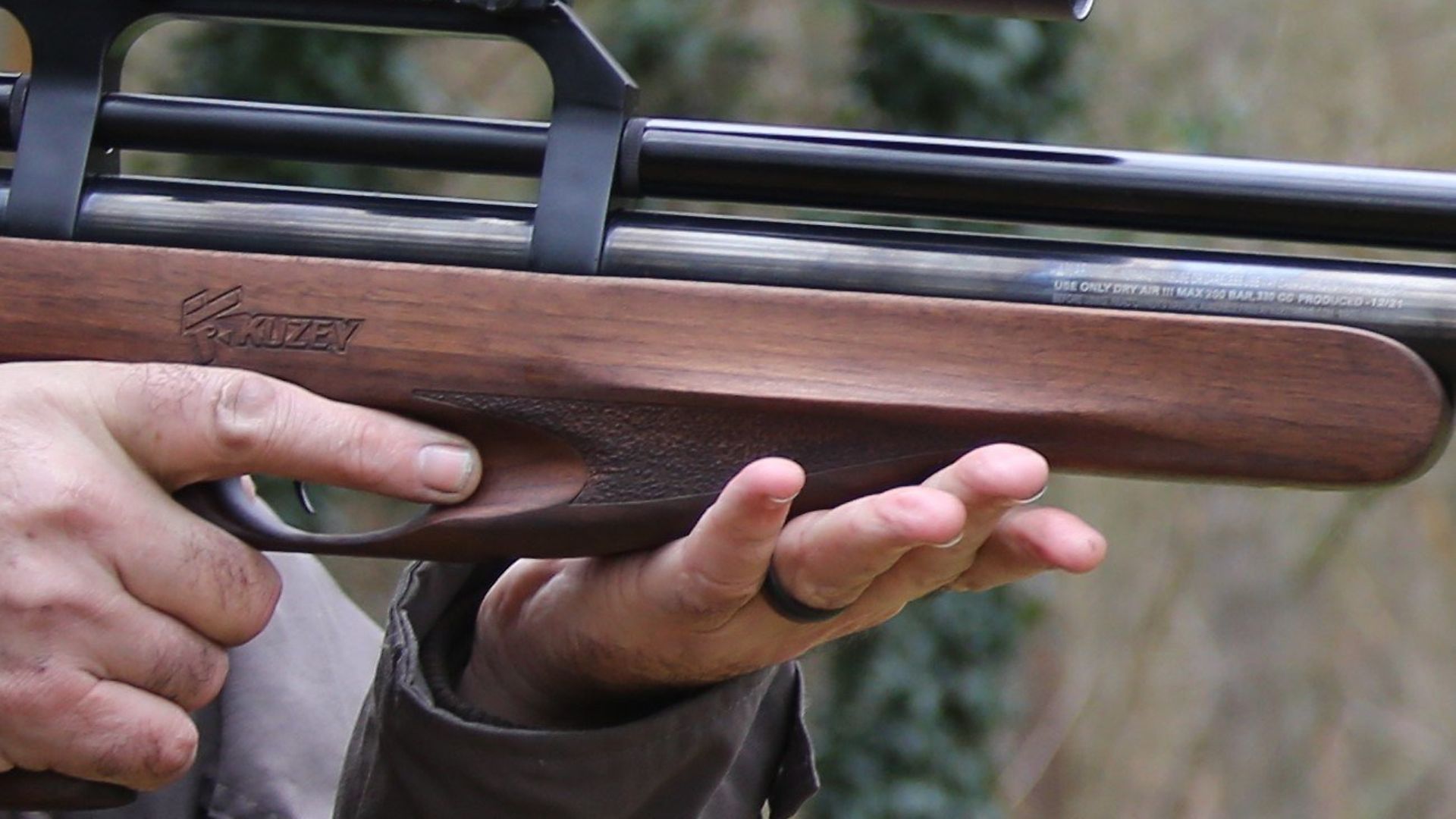 credit: Archant
credit: Archant
MULTI-SHOT MAGAZINES
There are two removeable, rotary, multi-shot magazines supplied with this rifle, offering 14 shots in .177 and 12 in .22, and they slot into the breech from the right-hand side. Loading the mag’s follows the familiar procedure of rotating the magazine’s clear cover, clockwise, to tension its inner drive-spring, then loading the first pellet to lock the internal pellet carrier.
Now, the clear cover can be rotated back to its starting position, loading a pellet in each vacant chamber until the mag’ is filled. Like all magazines of this design, once the last pellet leaves the muzzle, the rifle’s loading probe is blocked, telling the shooter that a reload is required. In other words, you can’t shoot fresh air with a Kuzey K300. That’s how it should be at this level, too. Now let’s see exactly what ‘this level’ really means.
ACCURACY AND CONSISTENCY
The .177 test rifle seemed to prefer my personal stash of Air Arms Diabolo Field pellets, and through the course of this test I found myself down to the tune of an entire tinful. Around 20 shots into my first session with the KT300, I knew I had to sort the trigger adjustment. So, as reported earlier, I did the necessary and resumed my benchrest accuracy test. The reason I knew I had to tweak that trigger was the Kuzey’s obvious potential, which established itself within 10 shots. At one point, I even said out loud, ‘Oh, here we go!’, as the 10th pellet clipped the group at 40 yards.
Checking the chronograph info after 50 shots revealed an average deviation that agreed with the printout supplied by Range Right, which is always reassuring, and knowing that any rifle is blipping out its shots with commendable consistency does wonders for shooter confidence.
By the end of this test, I’d established that, conditions permitting, the Kuzey K300 can shoot 16mm diameter groups at 40 yards, and that’s quite a statement, especially considering the test rifle’s price, but there’s more to any superior sporter than shooting tight groups. Let’s check out what else comes as standard with this bullpup.
BALANCE AND HANDLING
Once I’d settled on my optimum mount/scope/cheekpiece height configuration, the K300 shouldered swiftly and effectively, but it’s vital to note that this configuration absolutely HAD to be established before any serious evaluation could be carried out. I can’t over-emphasise how important this is, and for two main reasons.
First, without setting up this rifle and its scope to suit your personal geometry, you’re going to get the wrong first impression of it, and the K300 definitely deserves proper consideration. Second, if you buy this rifle, the only way to extract its full potential is to set it up to succeed. Half-measures will surely produce sub-optimal results, so resist at all costs the urge to accept ‘near enough is good enough’, in your desire to get stuck into the shooting. Again, a retrofit adjustable butt-pad will more than earn its keep, so consider that investment.
Without a scope fitted, the balance point of the Kuzey K300 sits just behind the trigger blade at the front edge of the grip. That puts the balance of this bullpup firmly in the ‘neutral’ zone, where most sporting shooters prefer it. A scope and silencer, depending on their specifications, could well affect this balance, but the K300s design, allied with its all-up weight of around 8.5lbs – 7.3lbs rifle only – helps keep the Kuzey nicely on aim. This rifle is guided toward its target, rather than pointed at it.
RANDOM OBSERVATIONS
The padded hard case supplied with this rifle is of noticeably higher quality than some that come as part of the deal. The latches are robust, and if you fit a small-ish scope, the K300 will find itself held securely once all four latches are snapped shut.
Go for a larger scope, and the case won’t accommodate the combo. A friend who, frankly over-analyses most things, remarked that the case supplied with the K300 could perfectly accommodate five pistols, fitted with red-dot scopes. Make of that what you will.
I particularly liked the sweeping, contoured lines of the rifle’s fore end, which are pretty and functional, and overall, this is a good-looking, well-made sporter.
FINAL POINTS
The K300 needs a sympathetically-styled silencer for the hunting field. That said, I’d go without a silencer, rather than fit something that will wreck the visual and possibly the physical balance of this rifle. Just keep looking until you get the right moderator and don’t compromise.
Next, make sure the cocking linkage remains clean and correctly lubricated – which doesn’t mean squirting oil all over it or smothering it with grease, because that will turn the K300’s action into a grit magnet, and you really don’t want that.
Finally, apply a tiny amount of walnut oil to the Kuzey’s stock and rub it in with the palm of your hand. Do this at least once a month, but again, less oil is more. Judging by the build quality, the Kuzey K300 should last for many, many years.
For me, the jury’s still out on that underlever cocking mechanism, but as I said, I’ll be exploring that more in next month’s follow-up test. As it stands, it’s no less or more convenient than a sidelever, and slightly more practical than a bolt-action, but we’ll see next month.
One thing I’m absolutely sure about, is that the Kuzey K300 represents outstanding value for money, and that its price/performance trade-off resolves in favour of the shooter. This rifle will sell in high numbers, of that I’m certain.
TECHNICAL SPECIFICATION
Model: K300
Manufacturer: Kuzey
Country of origin: Turkey
Price: £550
Type: Pre-charged pneumatic, multi-shot sporter
Calibre: .22, or .177
Cocking/loading: Underlever
Trigger: 2-stage, adjustable, with manual, resettable, through-trigger safety
Stock type: Ambidextrous, walnut, with adjustable cheek piece
Weight: 3.4kg (7.5lbs) rifle only
Length: 720mm (28.2 ins)
Barrel: 480 mm (18.9 ins)
Filling Pressure: 200bar (3000psi)
Magazine capacity: 14 in .177, 12 in .22
Shots per charge: approx. 210 in .177 and 300 in .22, at11-plus ft.lbs.
Average energy: 11.3 ft.lbs.
Contact: Range Right